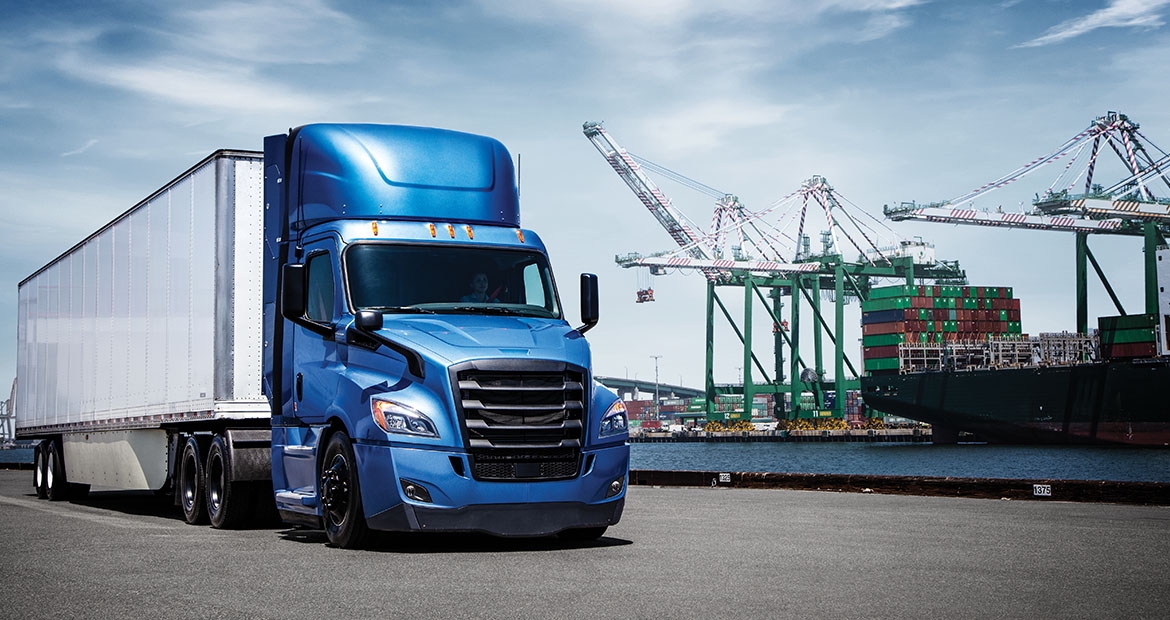Economic benefits of natural gas engines
By Puneet Singh Jhawar, General Manager – Global Spark Ignited Business

Compared to diesel and gasoline vehicles, natural gas engine vehicles pollute less, have a smaller carbon footprint, and use a fuel that doesn't present any risk of soil or water contamination. Surely, these environmental benefits of natural gas engines must come at a cost premium, right?
For many applications, the opposite is true. Switching to natural gas vehicles offers fleet operators long-term economic benefits and enhances the sustainability profile of their business, despite the higher upfront cost compared to diesel trucks.
Cost savings through low, stable natural gas fuel prices
The first source of savings is the fuel itself. In the United States, natural gas retail prices are, on average, significantly lower than the retail price of both gasoline and diesel. This has been true for the past 20 years. The price of natural gas is also stable and disconnected from the price of petroleum fuels. For companies operating who do not have the option to adjust the price of their services to reflect rising fuel prices, the stability of natural gas prices is a major benefit. Public transit authorities, for example, cannot easily increase the price of bus tickets. Operating natural gas buses helps them avoid experiencing financial hardships every time the price of diesel or gasoline goes up.
As of late 2021, diesel averaged $3.10 per gallon gasoline equivalent, while CNG (compressed natural gas) was priced at $2.33 per gallon gasoline equivalent, making CNG a more cost-effective option. At these prices, a truck that uses 10,000 gallons of fuel per year would save $7,700 each year by running on CNG.
Reduced maintenance costs with natural gas engines
Fuel cost savings are only one part of the equation. Natural gas vehicles also require less maintenance than diesel vehicles equipped with aftertreatment systems. This is significant due to the complexity of the aftertreatment systems required to meet current emissions standards, particularly in the United States. These systems require a lot of preventative maintenance, such as changing filters. Adding up the cost of repairs, consumables, maintenance and downtime for maintenance, maintaining a modern aftertreatment system can cost several thousand dollars per year. With natural gas vehicles, which have much simpler aftertreatment systems, these costs are almost entirely eliminated.
These maintenance aspects are important considerations while evaluating when to switch to natural gas engines.
Incentives could also offer economic benefits for natural gas engines
Abundant government incentives are also available for businesses who want to invest in natural gas vehicles. In the United States, most states provide incentives such as high occupancy vehicle (HOV) lane access, parking privileges, infrastructure grants, and discounted natural gas purchases for CNG vehicles. At the federal level, substantial tax credits are available. For example, a tax credit of $0.50 per gallon gasoline equivalent has been available throughout 2021 for CNG and liquified natural gas (LNG) use. This amounts to an effective reduction of more than 20%, or $5,000 per year for a vehicle which uses 10,000 gallons of fuel per year. (The credit expired in 2021, but extension bills for 2022 are in the legislative pipeline.)
Driver and operational savings associated with natural gas engines
There are other soft savings associated with operating natural gas vehicles. For example, operators of CNG vehicles who choose to install a "time-fill" fueling system on their premises can save labor hours. "Time-fill" systems slowly fill CNG tanks overnight. At the end of the day, drivers park their vehicle at a fueling point, connect a fuel nozzle to the vehicle and go home. Compared to waiting for their turn at the gas pump, and then waiting several minutes to fill their tank, drivers save time, and their company saves money. Drivers and mechanics also report they enjoy working with natural gas engines compared to diesel engines. They are quieter, cleaner, and don't cause anyone to leave work smelling of diesel fuel. In some cases, these quality-of-life improvements can lead to lower staff turnover, and thus lower costs associated with training and recruitment.
Businesses whose operations allow them to see savings across these cost categories can quickly recoup the initial investment in natural gas vehicles. Switching to natural gas vehicles may not be for everyone, but for many businesses, investing in natural gas vehicles is a smart financial move.
If these benefits sound interesting to you, don't forget to also check our answers to frequently asked questions about natural gas engines. These answers cover topics such as cost, practicality, and feasibility of integrating natural gas into commercial fleets.
Never miss the latest and stay ahead. Sign up below to receive the latest in technologies, products, industry news, and more.

Author Profiles

Puneet Singh Jhawar, General Manager – Global Spark Ignited Business
Puneet Singh Jhawar is the General Manager of the global natural gas business for Cummins Inc. In this role, he is responsible for the product vision, financial management and overall performance of the natural gas business. Over his 14-year career at Cummins, Jhawar has cultivated successful relationships with a number of Cummins' largest customers. Jhawar has extensive global experience, with roles based in the Middle East, India, Europe and the US.
Related Tags